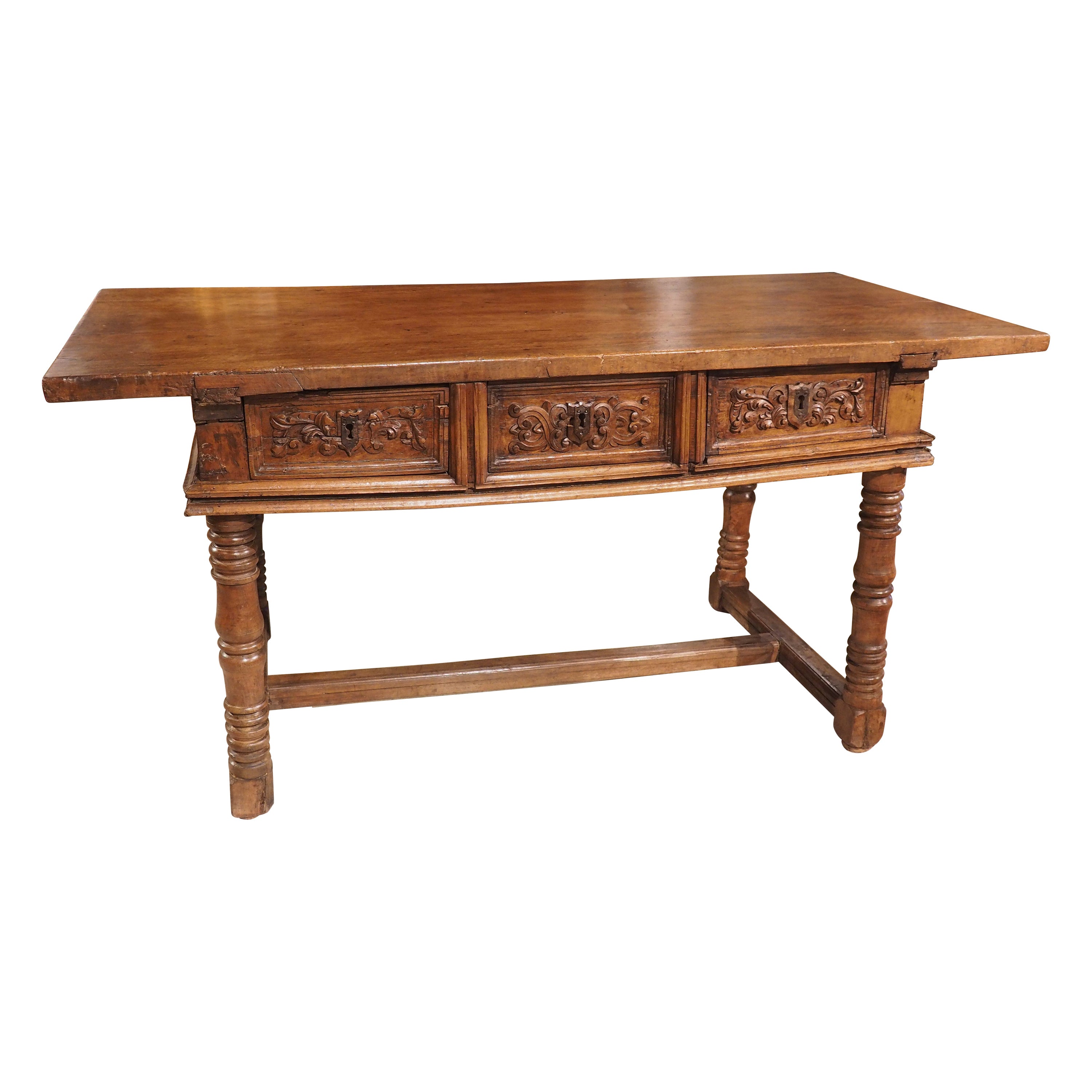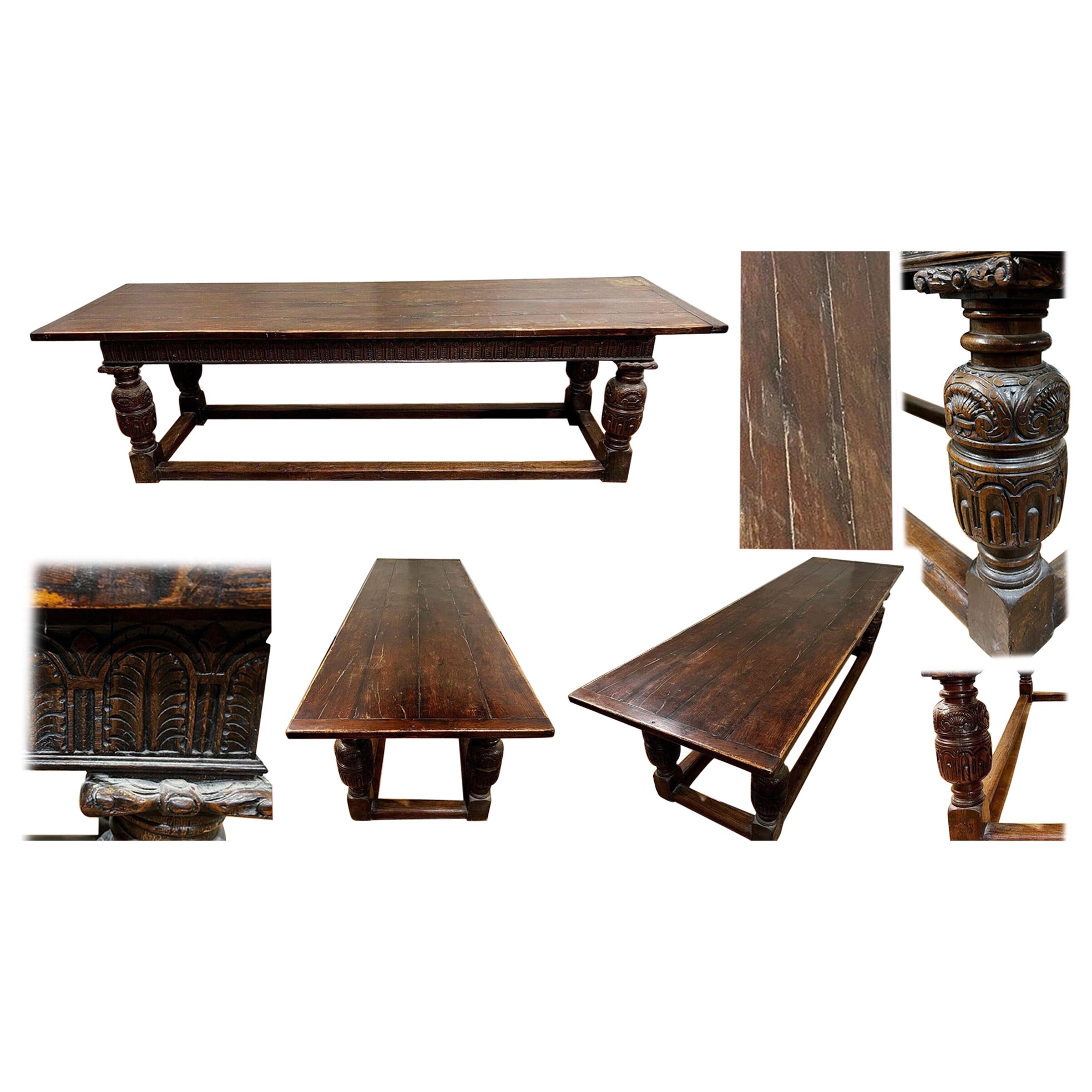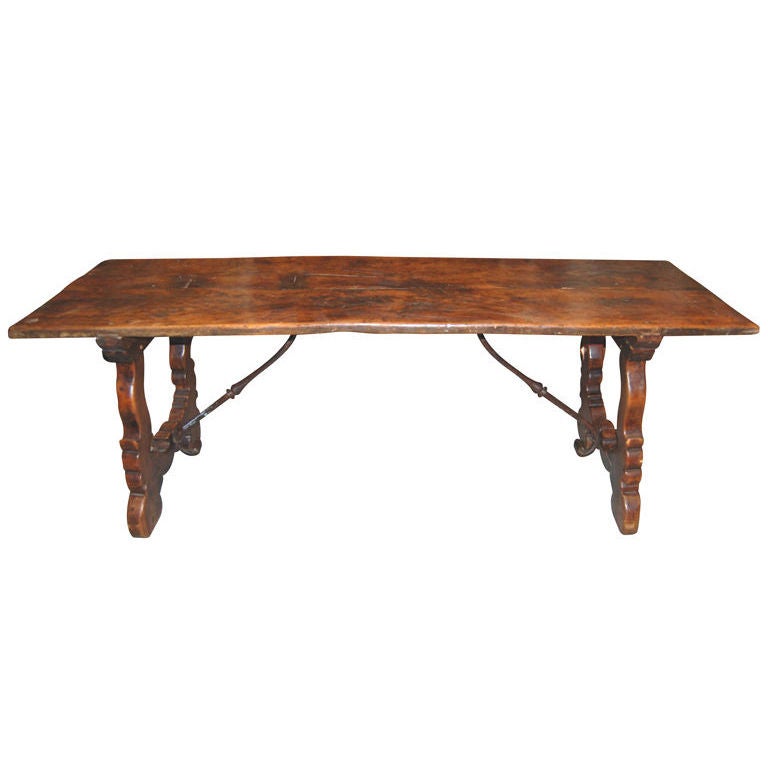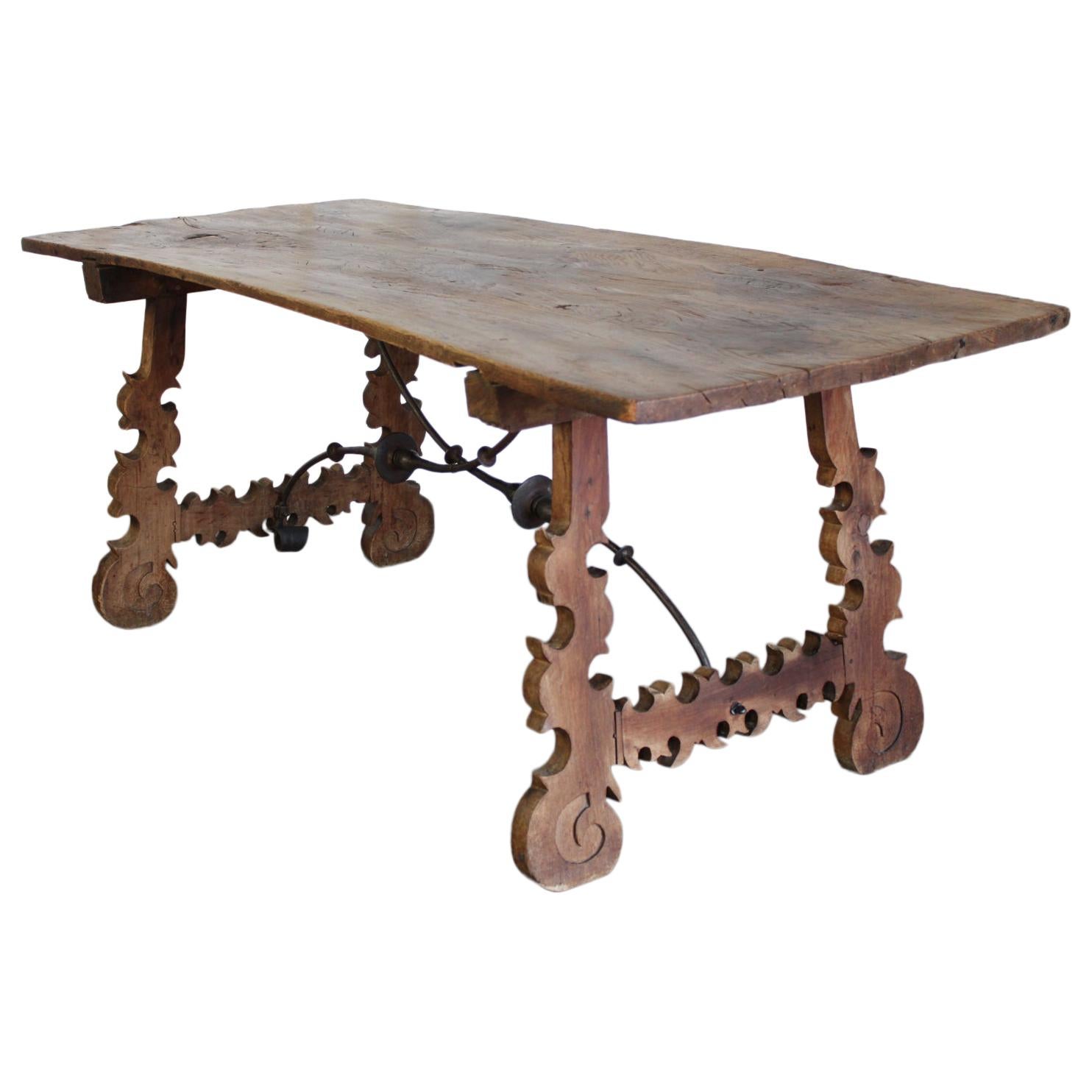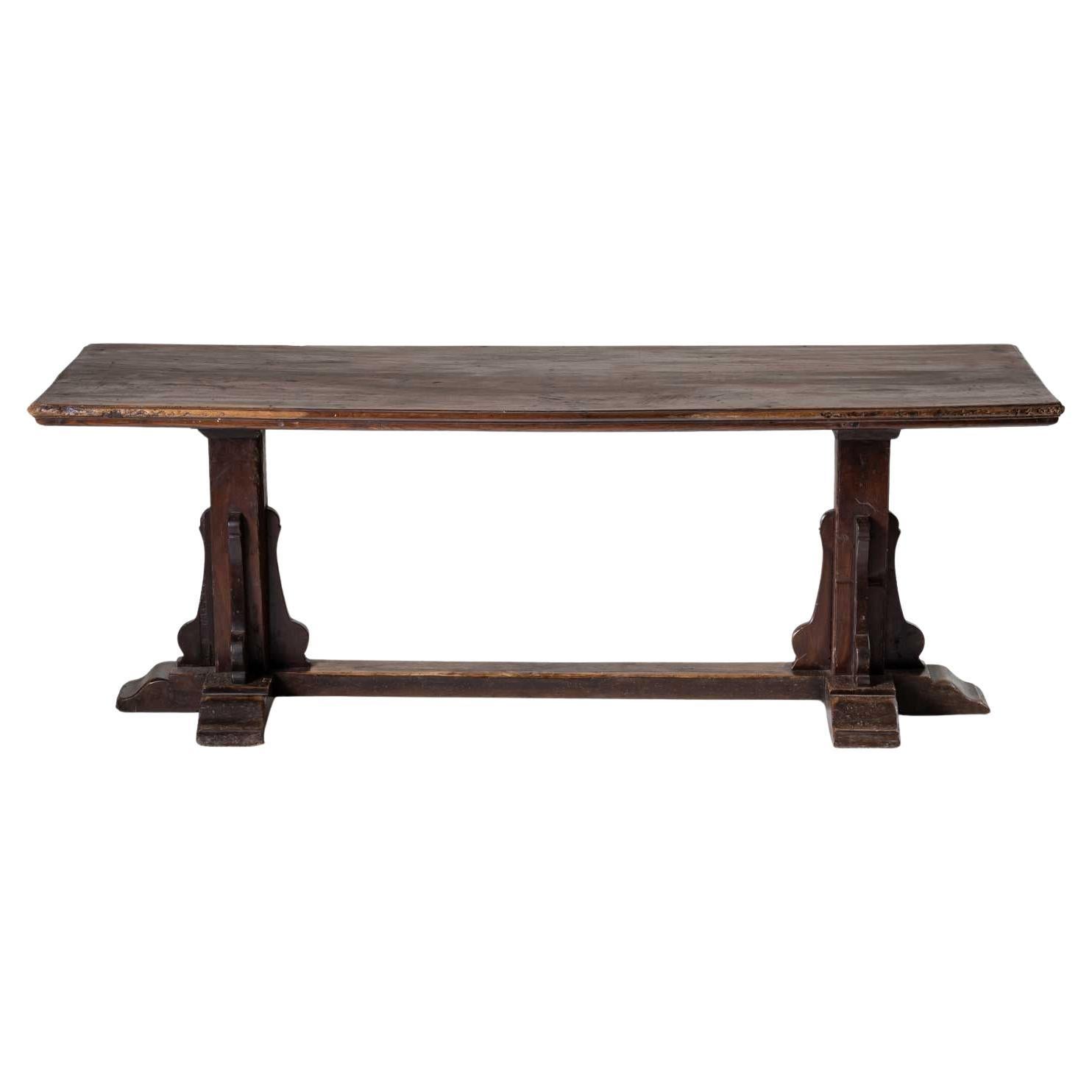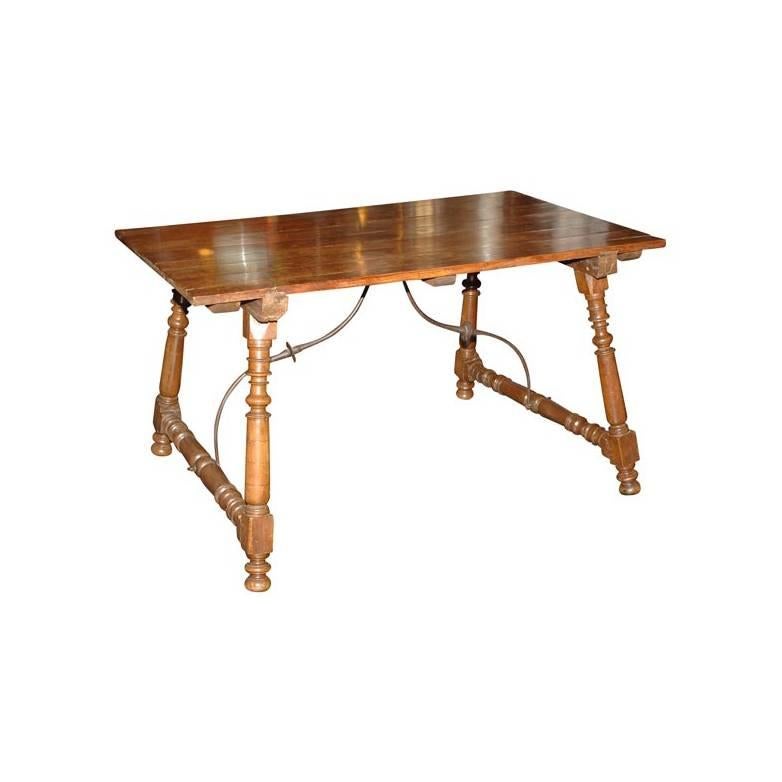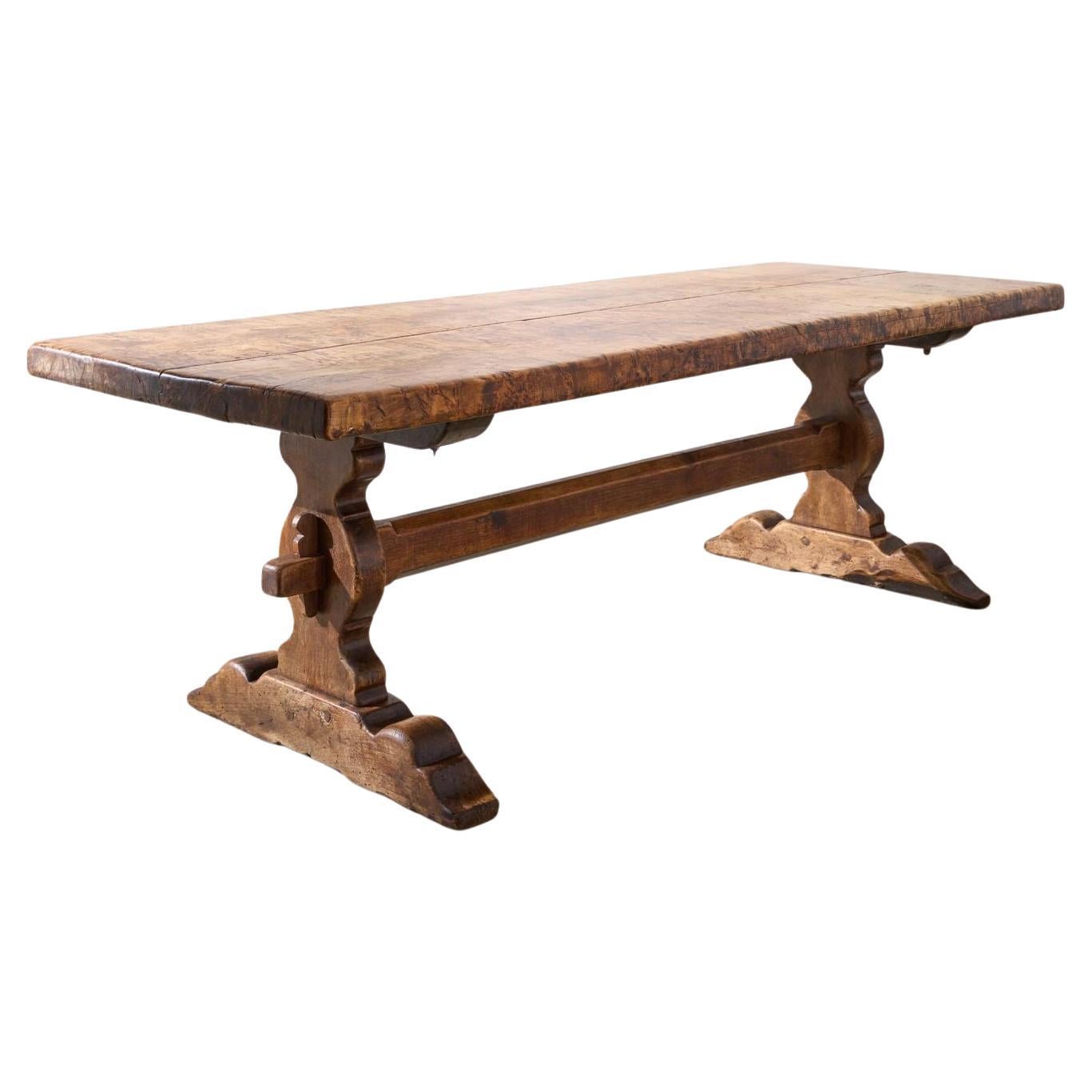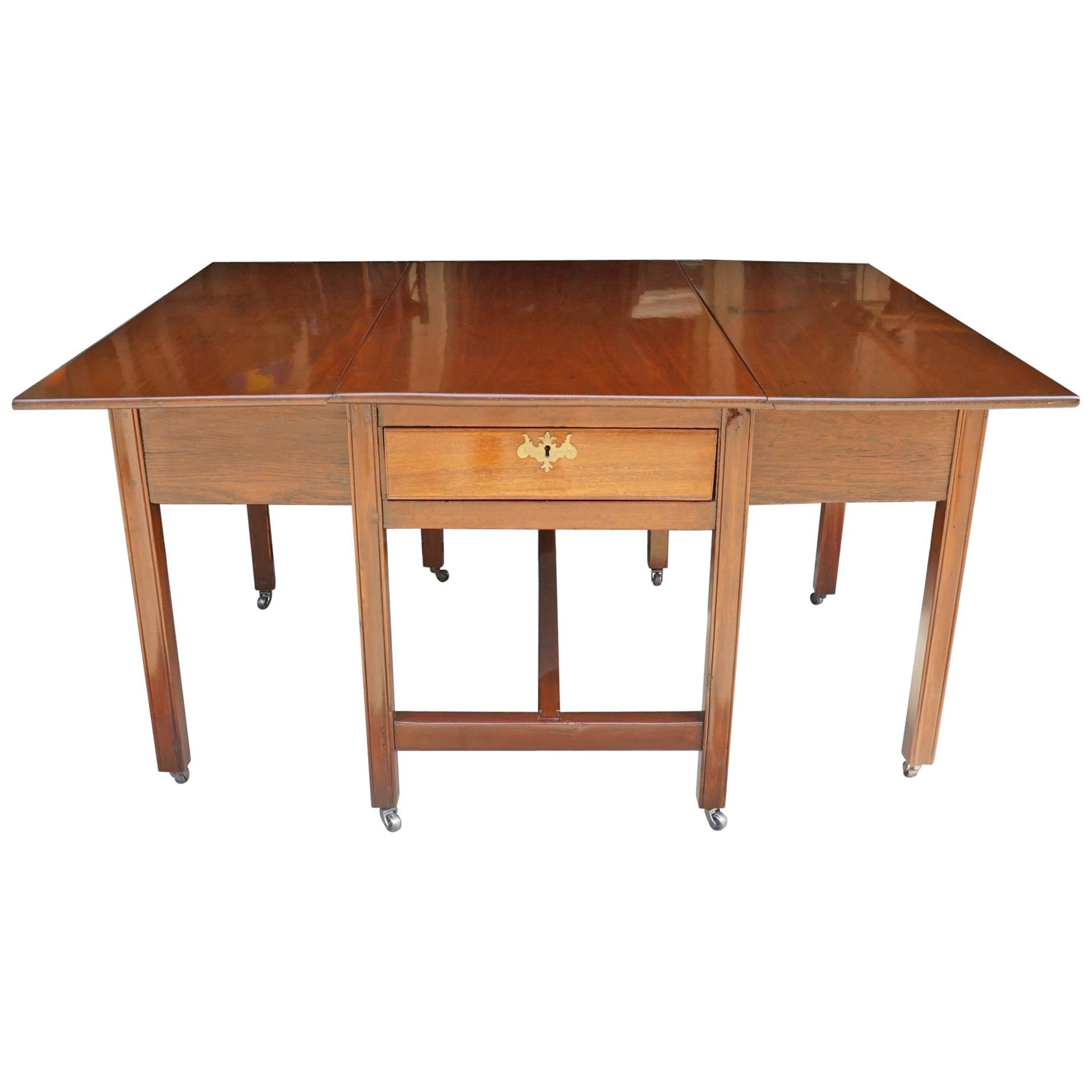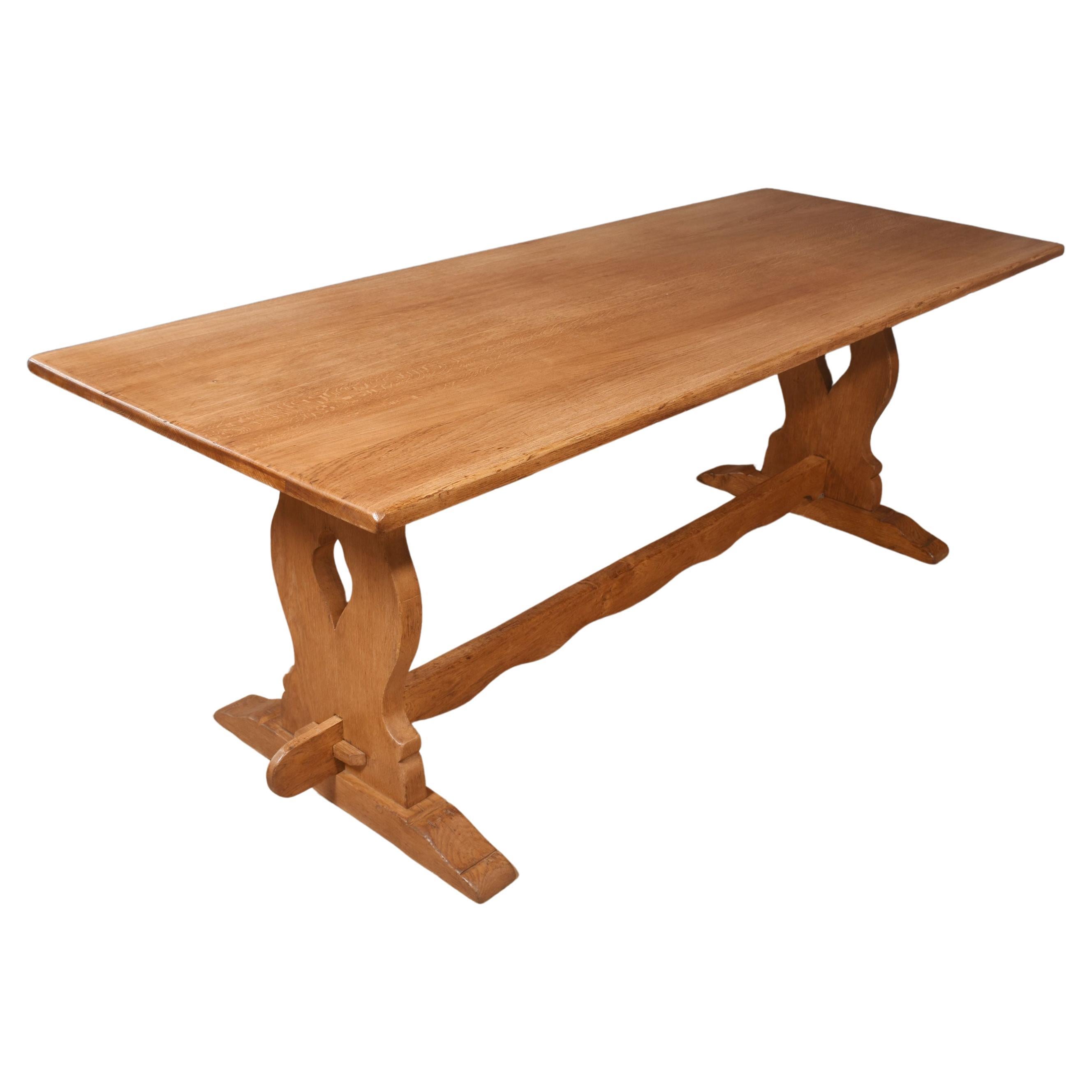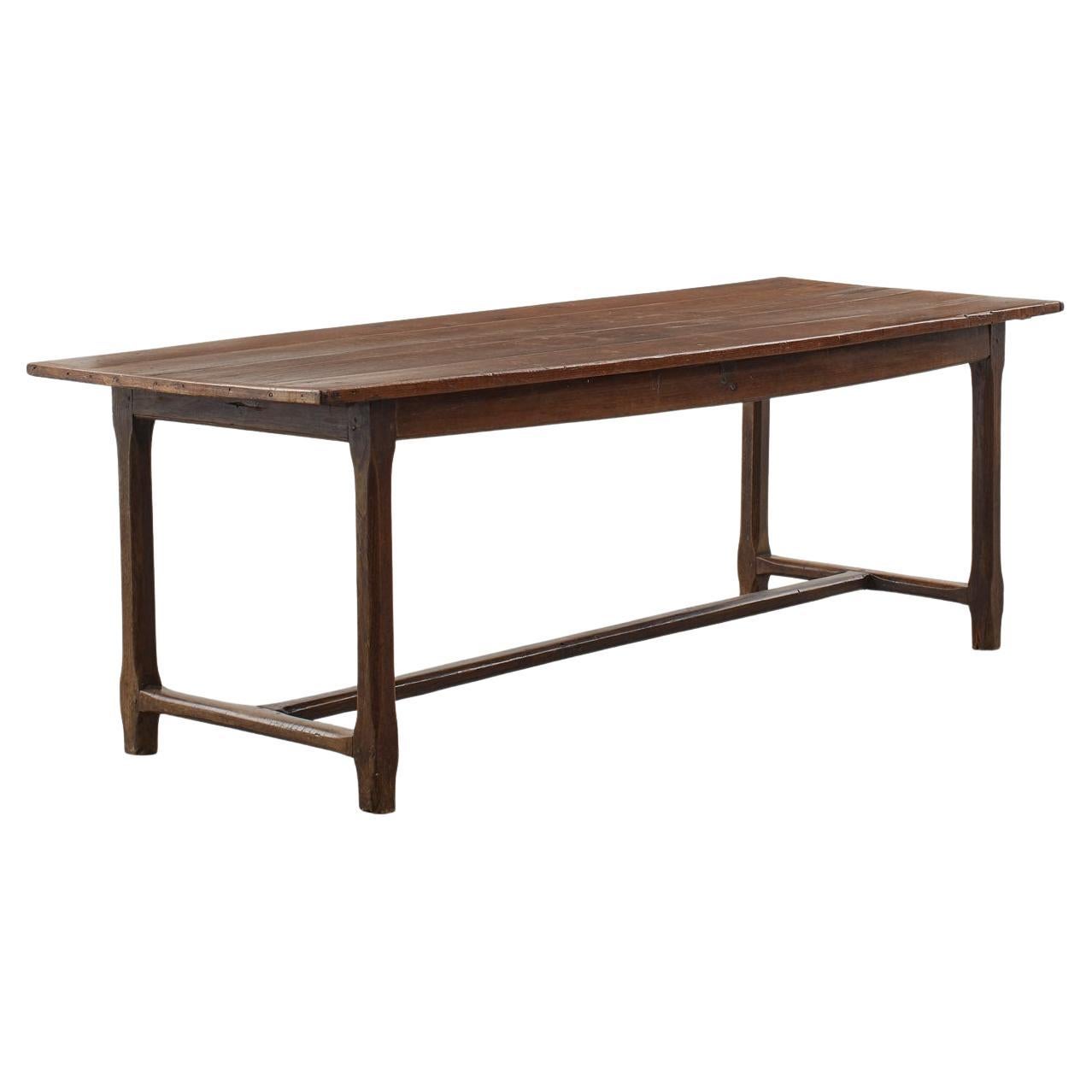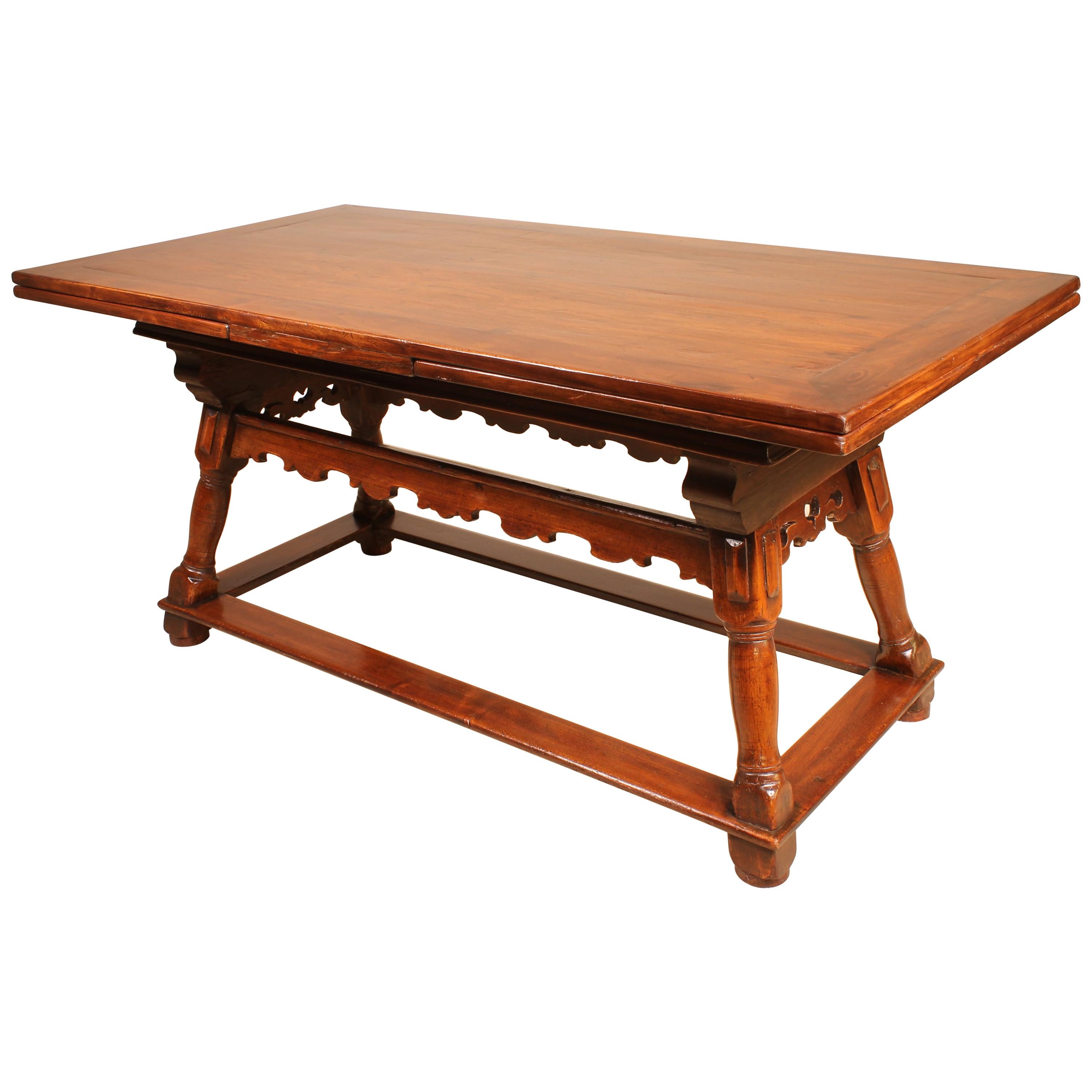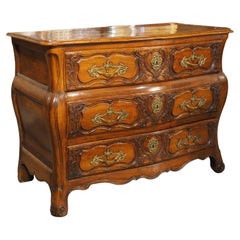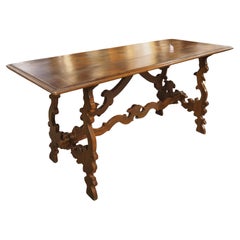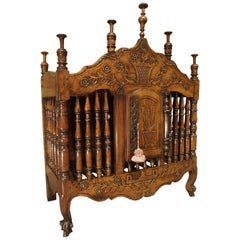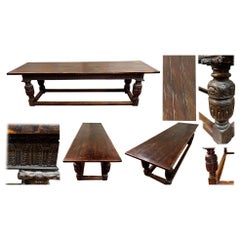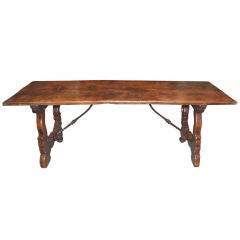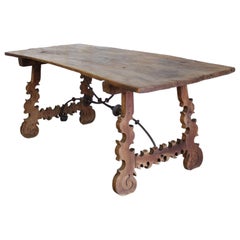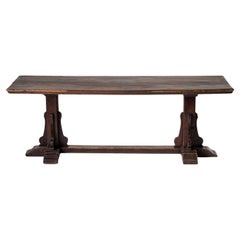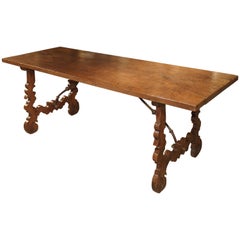
Single Plank Oak and Walnut Wood Refectory Table from Spain, 18th Century
View Similar Items
Video Loading
Want more images or videos?
Request additional images or videos from the seller
1 of 12
Single Plank Oak and Walnut Wood Refectory Table from Spain, 18th Century
About the Item
- Dimensions:Height: 31 in (78.74 cm)Width: 82.88 in (210.52 cm)Depth: 30.25 in (76.84 cm)
- Materials and Techniques:
- Place of Origin:
- Period:
- Date of Manufacture:Mid-1700s
- Condition:Repaired: Traces of old restoration work. Wear consistent with age and use. Minor losses. Beautiful antique condition with old restorations, minor splits and losses all commensurate with age of 1700’s. Please inspect photos.
- Seller Location:Dallas, TX
- Reference Number:Seller: 817-11stDibs: LU90639727863
About the Seller
5.0
Platinum Seller
Premium sellers with a 4.7+ rating and 24-hour response times
Established in 1983
1stDibs seller since 2011
829 sales on 1stDibs
Authenticity Guarantee
In the unlikely event there’s an issue with an item’s authenticity, contact us within 1 year for a full refund. DetailsMoney-Back Guarantee
If your item is not as described, is damaged in transit, or does not arrive, contact us within 7 days for a full refund. Details24-Hour Cancellation
You have a 24-hour grace period in which to reconsider your purchase, with no questions asked.Vetted Professional Sellers
Our world-class sellers must adhere to strict standards for service and quality, maintaining the integrity of our listings.Price-Match Guarantee
If you find that a seller listed the same item for a lower price elsewhere, we’ll match it.Trusted Global Delivery
Our best-in-class carrier network provides specialized shipping options worldwide, including custom delivery.More From This Seller
View All17th Century Spanish Walnut Wood Table with Single Plank Top
Located in Dallas, TX
A beautifully crafted wooden table from Spain, the walnut was hand-carved at the end of the Renaissance (in the 1600’s). As is the case with most Spanish Renaissance tables, the 1 ½” thick single plank top rests upon tightly turned legs. The edges of the top do not have molding or carvings but receive added character from the large dovetail grooves that were used to construct the table.
This table has framing beneath the top plank which houses three horizontally aligned drawers. Each drawer façade has an iron escutcheon in the shape of shield with two engrailed top edges. The keyplate is set within a foliate margent that is surrounded by several layers of molding. Identical carvings and iron plates can be seen on the opposite side of the table, which has faux drawer fronts. Beneath the belt are four turned legs connected by an H-stretcher.
Our 17th century Spanish walnut table...
Category
Antique 17th Century Spanish Sofa Tables
Materials
Metal, Iron
18th Century Walnut Wood Commode from Bordeaux, France
Located in Dallas, TX
Hand-carved in walnut wood during the 1700s, this lovely commode hails from Bordeaux, France. The top has a subtle arbalete curve with quarter-round molding, while the sides have a m...
Category
Antique 18th Century French Commodes and Chests of Drawers
Materials
Metal, Bronze
19th Century Italian Walnut Lyre Leg Table with Baroque Style Wooden Stretchers
Located in Dallas, TX
The dynamic shapes and ornate detailing associated with Baroque-style furniture are unmistakable on this Italian lyre leg table. Hand-carved in the late 1800s from walnut wood, the o...
Category
Antique Late 19th Century Italian Baroque Sofa Tables
Materials
Wood, Walnut
18th Century Carved Walnut Wood Panetiere from Provence, France
Located in Dallas, TX
From Provence, France, this beautiful walnut panetiere was hand-carved in the 1700’s. Panetieres were usually hung on walls and functioned as a decorative way keep bread safe...
Category
Antique 18th Century French Louis XV Cabinets
Materials
Metal
18th Century Walnut Wood Crossbow Commode from Provence, France
Located in Dallas, TX
In French, arbalete means “crossbow” and is typically used to describe the shape of furniture when the frontage has been carved in a sinuous manner. When the profile is viewed from above, it resembles the European Medieval crossbow. In the case of this walnut commode from Provence, the form is double arbalete.
Two iron swag handles are affixed to each of the three stacked drawers by parted shell mounts. In between the pulls is a sinuous plate that surrounds a keyhole. Each drawer maintains the arbalete structure created by the thinly molded top. The apron is highly shaped, with many small arbaletes strung together. In the center is a gadrooned leaf and floret medallion surrounded by volute scrolls.
The sides are straight but consist of recessed rectangular panels with asymmetrical tops...
Category
Antique 18th Century French Commodes and Chests of Drawers
Materials
Iron
Early 18th Century Walnut and Olive Wood Armoire from Eastern France
Located in Dallas, TX
This unique armoire from the early 1700’s was made from walnut and olive wood and features a plinth base with central cherub mascaron along the crown. At just under 86 inches tall and 78 wide at the crown, this armoire has a more manageable size, compared to many of the very large armoires of the same period. The unique construction allows it to be easily disassembled for transport.
At one point, this walnut and olive wood armoire was the property of a chocoladefabriek (chocolate factory) in Strasbourg, located in the region of Alsace, near the German border. It was originally one armoire in a pair that were commissioned in Eastern France in the early 1700s. The ebeniste who created the armoire decided to use olive wood for the door panels and some of the side panels. Olive wood was a highly valued wood among wood workers of the 18th century because of its pretty color and the richness and nuances of its veining.
In the center of the crown is a foliate and floral ring surrounding a cherub mascaron. The crown and the top of the door frames have both been carved in an arch, mirroring the shape of the door moldings. Each door is mounted on iron hinges and separated by recessed molding into three uniquely shaped panels of olive wood (the rest of the armoire is constructed with walnut). Both upper panels of the doors are adorned with a series of undulating C-scrolls, while the bottom panels are rectangles with concave tops. The two sections are separated by a simple ovate center panel.
Armoires date back the 17th century when French menuisiers created the storage cabinet to house clothing. Early armoires such as this one were without feet (plinth style base) and were often seen in paneled boiserie...
Category
Antique Early 18th Century French Wardrobes and Armoires
Materials
Metal, Iron
You May Also Like
Antique Refectory Table Oak Plank Top 18th Century Farmhouse
Located in Potters Bar, GB
Wonderful antique oak plank top refectory table
Circa 18th century to this work of art
Features bulbous legs with intricate carving
There is further...
Category
Antique 18th Century Dining Room Tables
Materials
Oak
18th C. Walnut Refectory Table
Located in New Orleans, LA
Walnut Refectory table with Iron Stretcher and Harp Legs
Category
Antique 18th Century and Earlier French Dining Room Tables
Materials
Walnut
18th Century Walnut and Artistic Iron Refectory Table
Located in Las Vegas, NV
An outstanding 18th century dining table from Spain.
A single slab of walnut top with fantastic aged patina and rough grain.
Hand forged iron stretchers with gorgeous lyre shaped l...
Category
Antique Mid-18th Century Spanish Primitive Dining Room Tables
Materials
Wrought Iron
Large Walnut Refectory Table, Italy, 18th Century
Located in Greding, DE
Large dining table with a rectangular, narrow table top on two column legs with an intermediate strut. The refectory table is made of walnut and has a beautiful patina.
Category
Antique 18th Century Italian Dining Room Tables
Materials
Walnut
18th Century Spanish Walnut Table
Located in San Francisco, CA
Spanish library or dining table with Circassian walnut top and turned legs, a original iron stretchers. Spain, 18th century.
Category
Antique Early 18th Century Spanish Renaissance Dining Room Tables
Materials
Wrought Iron
Late 18th Century English Drop-Leaf Gate Leg Dinning Table
Located in Hudson, NY
This table, circa 1780, is made of mahogany and has a new finish and replacement casters. This form of table has been in use since the 1600 but has in each successive generation been...
Category
Antique Late 18th Century English Chippendale Dining Room Tables
Materials
Mahogany
